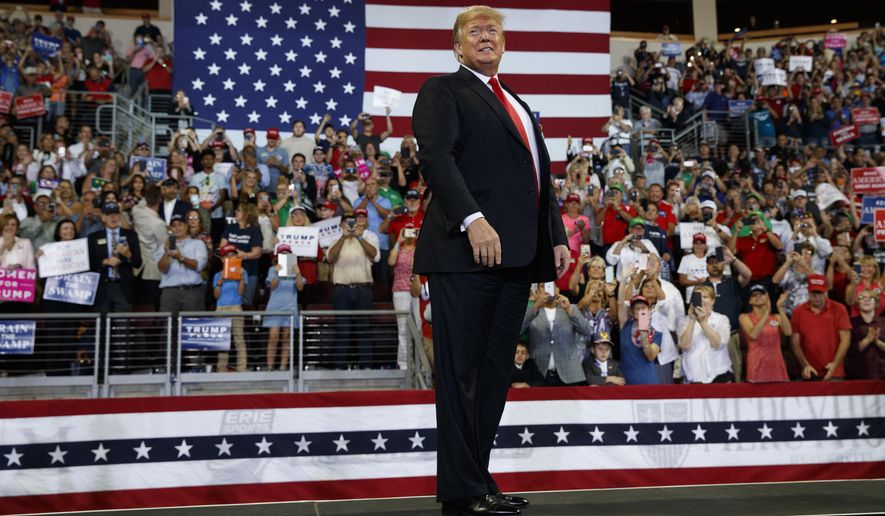OPINION:
What takes over a heart, infects a soul so perversely that a person sees murder, terror and violent crimes and immediately begins plotting how such misdeeds might benefit himself? How such things might advance his own political agenda?
Is it the incivility of political rhetoric these days?
The media tries drawing a straight line from President Trump’s joyous verbal pounding of the media to actual violence against reporters. That is why there has been so much flood-the-zone coverage of the dastardly murder of Jamal Khashoggi, the occasional columnist for The Washington Post.
Their argument: It’s all President Trump’s fault.
Because Mr. Trump commended a politician for “body slamming” a reporter who had annoyed him. In this twisted world, making a joke about a guy who roughed up a reporter equals gang-torturing, killing and dismembering a reporter in a Saudi Consulate in Turkey.
And to think: There is actual video on the internet of Mr. Trump charging into a professional wrestling ring and body slamming the actual CNN logo!
Let’s pause for a bit of self-reflection. What does it say about the media in America today that a politician charged with physically assaulting a reporter promptly wins the election? I don’t know, maybe we might start thinking about how well we are doing our jobs if the only thing everybody seems to agree upon anymore is that the media does a terrible job.
Anyway, the truth is, uncivil political rhetoric has been around since America’s founding. How many dueling scenes are there in the hit Broadway musical “Hamilton”?
Deadly duels have fallen out of fashion in modern times, but hot political rhetoric remains pretty standard fare. Especially the kind that involves threatening physical violence against “journalists.”
In December 1950, President Harry S. Truman wrote a sizzling letter to a reporter for The Washington Post who had negatively reviewed a musical performance by Mr. Truman’s daughter.
“Some day I hope to meet you,” Mr. Truman wrote on White House stationery. “When that happens you’ll need a new nose, a lot of beefsteak for black eyes, and perhaps a supporter below!”
Hey, come to think of it: Can anyone say definitively where Mr. Truman was the day Mr. Khashoggi was so violently killed? I know, “supposedly” Mr. Truman is dead. But this raises seriously alarming questions.
Such sentiments about the media are so popularly widespread that a copy of that letter hung in the office of one of Mr. Truman’s successors, President Bill Clinton.
And who could forget, more recently, when Bill Clinton threatened violence against a New York Times scribe for writing a simple, verifiable statement of proven fact: Mr. Clinton’s wife is a “congenital liar.”
The official White House response to the column by the late, great William Safire was an official threat by President Clinton to punch Mr. Safire in the nose.
This was met by howls of outrage by the media over such a bald threat to free speech and journalism.
Actually, no it was not.
One spineless Clinton sycophant in the media, the editorial page editor for the Daily Press in Newport News, not only failed to condemn Mr. Clinton’s threat of violence, he outright applauded it.
“While I abhor violence,” he claimed in a newspaper column, “the idea of President Clinton punching New York Times columnist William Safire in the nose does have some appeal.”
The failed editor’s only complaint was that Mr. Clinton did not make more of his threat. The editor further encouraged Mr. Clinton to also violently attack radio king Rush Limbaugh and House Speaker Newt Gingrich. One must guess that the editor did not agree with the opinions held by Mr. Limbaugh and Mr. Gingrich — surely a perfectly good reason to wish violence on someone.
Hey, while we are asking questions: Where were Mr. Clinton and this failed editor on the day Mr. Khashoggi got chopped into pieces?
⦁ Contact Charles Hurt at churt@washingtontimes.com or on Twitter @charleshurt.




Please read our comment policy before commenting.